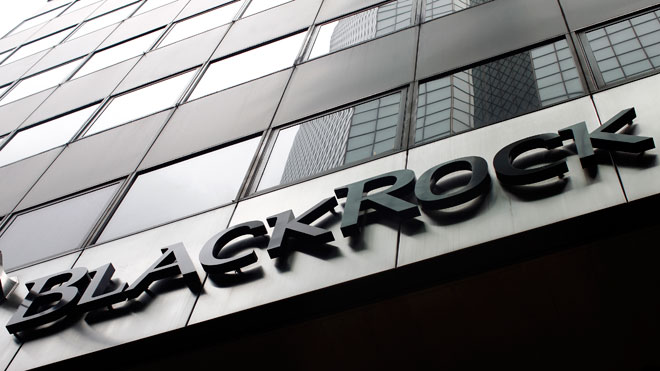
By Joyce Nelson
You may have caught the Sept. 12 headline in the Globe and Mail, the Edmonton Journal, etc: “Canada needs new energy pipelines, bond rating agency says.”
A new report from DBRS, Canada’s credit ratings agency (CRA), says Kinder Morgan’s TransMountain pipeline expansion, Enbridge’s Northern Gateway pipeline, and TransCanada Corp’s Energy East pipeline are all necessary, but, as the Edmonton Journal put it, the “strong political, environmental and regulatory opposition” to these projects throws “a big question mark over Canada’s energy future,” the report says.
Ratings agency bought by private equity firms
DBRS is Canada’s (small) equivalent to the big three CRAs: Moody’s, Standard & Poors (S&P), and Fitch, which wield enormous power around the world by granting or downgrading the Triple-A ratings of companies, countries, and governments. The threat of a downgrade by a CRA can create scary media stories, especially if the target is a local government.
In December 2014, DBRS was bought up by two huge private equity firms – Carlyle Group LP and Warburg Pincus LLC. Both invest billions in energy projects around the world.
Conflict of interest
Since the 1970s the CRAs (aside from sometimes issuing unsolicited ratings) are paid for their services not by investors who want to know the safety of a bond being issued, but by the bond issuers themselves – who obviously have a stake in getting a Triple-A rating for their investment vehicle. These factors came into play during the U.S. subprime mortgage bubble, when some investment banks were paying the big three CRAs millions of dollars for Triple-A ratings on what turned out to be toxic assets.
In July 2014, I wrote a three-part series (“Debunking the Bogeyman”) on CRAs for Rabble.ca, so I knew a bit about how these CRAs operate. When I saw that DBRS had been purchased by Carlyle Group and Warburg Pincus, my first thought was: I wonder what those investment giants will do with DBRS?
Prentice delivers message for private equity firms
Fast-forward to September 12, 2016 and the new DBRS report, stating: “If pipeline infrastructure is not built, Canada’s energy sector increasingly risks the eventual loss of global market share” and “could eventually see their credit ratings change without more overseas access…”
The next day, September 13, Bloomberg reported that PM Justin Trudeau is said to be favouring Kinder Morgan’s pipeline expansion, but former Alberta premier Jim Prentice “warned Kinder Morgan’s project alone won’t be enough.”
[quote]’We need pipelines, we need pipelines to the West Coast, and most advantageous for Canada of course are pipelines into the Asia-Pacific basin and Trans Mountain would certainly be helpful,’ Prentice, a Calgary-based adviser in the energy group at Warburg Pincus, said Tuesday at the Bloomberg Canadian Fixed Income Conference in New York.[/quote]
The Bloomberg quote from Prentice continued: “‘But we also need to bear in mind that Trans Mountain won’t solve the problem,’ because tankers that can navigate the region are too small to service Asia, he said. Canada needs an energy port that can ship up to two million barrels per day to Asia, Prentice said, and Canadians should be concerned that investors are cooling to the country’s oil patch. ‘The concern that really should alarm us as Canadians is low-cost capital is exiting the Canadian basin,’ he said.”
So Warburg Pincus adviser Jim Prentice is endorsing the views of DBRS, owned by Warburg Pincus and the Carlyle Group, which have billions they want to loan to governments for investment in infrastructure. Prentice had earlier been a paid advisor for Enbridge in 2014, helping the company negotiate with First Nations opposed to Northern Gateway.
Revolving door

Making the picture even more interesting, on September 12 the Financial Post reported that Mark Jenkins, global head of private investments at the Canadian Pension Plan Investment Board (CPPIB) is leaving to take a senior leadership role at the Carlyle Group. The CPPIB’s Mark Wiseman has already left to work for BlackRock, the biggest asset manager in the world.
As I reveal in my forthcoming book – Beyond Banksters: Resisting the New Feudalism – all these big financial players are central to the infrastructure and privatization plans being rolled out for Canada and North America in the coming months. The Justin Trudeau Liberals are planning to spend $120 billion on infrastructure (by borrowing from private sources), and are readying for their 2017 budget announcement, which will reveal Phase 2 of their big infrastructure plans.
On November 14, BlackRock (which manages trillions of investment dollars) will host a private summit for major international investors hoping to loan billions of dollars to Canadian governments for infrastructure spending. On the speakers list are Justin Trudeau, Finance Minister Bill Morneau, Infrastructure Minister Amarjeet Sohi, and other federal officials.
Will the Carlyle Group and Warburg Pincus be at that private summit? You can safely bet on it. Will the press be allowed to cover this private summit that includes our elected officials? That’s a big question. Will DBRS be playing a bigger role in the next few months? Stay tuned.
Joyce Nelson is an award-winning freelance writer whose sixth book, Beyond Banksters: Resisting the New Feudalism, can be pre-ordered at http://watershedsentinel.ca/banksters now.


Just leave the filthy stuff buried, can’t understand why Canadians are willing to allow the federal government to subsidise the tar sands to such an extent, most oil majors ( iirc) are pulling out or reducing their investments .
Smells a bit like the Abbott/Turnbull govt of Australia, desperately trying to get the galilee coal mine going, though most major investors regard it as a ‘dead duck’
Could it be the old story of brown envelopes and revolving doors?
If so, the RE lobby and tourist lobby need to quickly learn the ropes, or they are going to be on them.
The most telling thing from this article is that Prentice is quoted as saying “Trans Mountain won’t solve the problem, because tankers that can navigate that region are too small to service asia”
Okay?? So why build it???
Joyce has a new book coming out very soon and I’ll be reviewing it for you next week. I have read it, it’s a breakthrough, no one has done this and it”s called Beyond Banksters: Resisting the New Feudalism. You’ll love it. I was ssked to glance st it and do an introductory blutb for it but kept right on going – i could not put it down.
Beyond Banksters: Resisting the New Feudalism By Joyce Nelson in a few days right here in the Common Sense Canadian
That’s good to hear; I just purchased my copy.
I’m just curious.
Is there a record out there somewhere listing Transmountain pipeline breaches with the size of the ensuing spills over the past 55 years?
Since Tar Sands bitumen is more corrosive and pumps at much higher temps and pressures than regular pipeline crude we would expect a higher number of breaches with Tar sand goo….
NO TOXIC, TAR SANDS PIPELINES THROUGH THE ROCKIES. The tar sands have to be stopped at the BC/AB border, because if there is an earthquake, an avalanche or a rock side against Kinder Morgan’s pipeline, the pipeline would break and destroy the surrounding environment and ecology. Even if, the equipment did exist, it would be impossible to access the damaged areas in the mountains and in the mountain passes. Many of these areas are not accessible by a mountain goat. The oil from the tar sands would seep through the rocks during a spring run-off, to spawning streams and rivers and destroy the salmon industry. The damage would be wide spread and irreversible. So what? No tar sands for beautiful British Columbia.
The oil or Tar sand will flow.
They havent spend 10’s of billions of dollars to extract, liquify, pump, etc. to just stop because we dont want it.
Pipeline or train cars….those are the choices and I’d take a pipeline over a train any day of the week.
Lac Megantic proves that trains are just as fallible as pipelines….
The technology exists to double wall pipes, reroute oil to side stream tank farms in the event of a breach to reduce spills, automatic valves, remote cameras, etc.etc.etc.
The majority of the spills occur during and AFTER a pipeline is breached because humans make the decisions to “stop the flow”.
Automate it.
A drop in pressure would be easily detected and send alarms all up and down the line as to a potential problem.
Computors cant be intimidated by bosses. No hesitation, no worrying about “consequences” if the flow is stopped. Just logical decisions based upon facts.
Oil companies hate spending money and the only way they will do it is if they are forced to…..so……email your MP.
We just have to hound the cheap corperate bastards into spending the money to “make it so…”
http://globalnews.ca/news/2116785/nexen-to-provide-update-on-northern-alberta-pipeline-spill/
‘We sincerely apologize’: Nexen’s ‘failsafe’ system didn’t detect massive northern Alberta pipeline spill
By Anna Mehler Paperny and Melissa Gilligan Global News.
Yes…nothing can go wrong!
New spill.
Old technology
Minimal fines for ruining the local environment.
Legislate them to upgrade.
Increase fines to millions( or hundreds of millions) of dollars per spill.
Make CEO’s of company’s personally, financially ,criminally liable for the decisions they make….
Drag these cheap penny pinching bastards into the 21st century.
If they want the oil to flow….they’re gonna have to pay for that privilege or someone else will…..